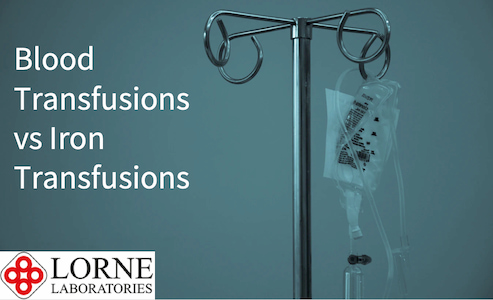Transfusions- Blood transfusion v iron transfusion
19 March 2015

Blood transfusions v iron transfusions - the differences
When a person presents symptoms at a doctor’s practice, the first priority is always the patient’s health and well-being. It is important to treat the condition that the patient may be struggling with, but sometimes there may be many reasons why a certain course of treatment is used rather than another. When the doctor considers the symptoms being presented they may think that a particular treatment would be more beneficial given the patient’s previous medical history or the seriousness of the condition. However, there may be other reasons why the patient may opt for one treatment instead of another, such as potential side-effects or religious reasons. When deciding between a blood transfusion or an iron transfusion it can be a complex argument, with previous medical history, potential reactions or your own ethics coming into play.
Iron and Blood Transfusions - Medical History and Health Conditions
As mentioned in the introduction, the patient's previous medical history may play a role in choosing an iron transfusion over a blood transfusion. A condition such as anaemia, which means the body lacks the required amount of red blood cells, can be treated in several ways including having a blood transfusion or an iron transfusion. These red blood cells are responsible for carrying oxygen around the body, so if they are lacking in number, the rest of the cells in the body are not getting enough oxygen. Anaemia can be caused by a variety of reasons including severe blood loss due to injury, surgery or even child birth, as well as in several other ways. Iron deficiency anaemia means red blood cells aren’t produced as readily as they should to replace older red blood cells which are no longer able to function. Depending on the type of anaemia or red blood cell disease, an iron transfusion may be more appropriate - learn more in our guide to Anaemia.
The Blood transfusion process
The average adult has about 5 litres of blood in their body and a blood transfusion is used to replace some of the lost blood. The blood is given intravenously through the patient’s vein by inserting a plastic tube into the vein. The blood transfusion replaces the red blood cell with new iron containing cells which are ready to carry oxygen around the body. However, some people do not want to have a blood transfusion and they have the right to refuse. This refusal may be the result of religious beliefs or other reasons and an alternative treatment could be an iron transfusion.
The Iron Transfusion process
Intravenous iron can be given to a patient through their vein which replaces the iron which is lacking in the body. Once this procedure has been carried out the person is able to increase the production of red blood cells. Being aware of all their options allows a patient to feel in control of their treatment, and may make a difference to their recovery time.
Lorne Labs provide a full range of Blood Transfusion Supplies and equipment - Browse the range and if you would like to place an order or learn more about our equipment, e-mail our team of experts.
< Back to blog list
Share





